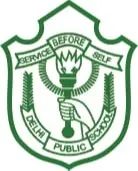Purpose: Assignment tests are designed to assess students' understanding of specific topics or concepts covered in the curriculum, serving as a formative assessment tool to gauge progress.
Frequency: Conducted periodically throughout the academic year, assignment tests align with the completion of units or chapters, occurring weekly, bi-weekly, or monthly.
Format: Pen Paper Tests conducted during the ZERO period, lasting 1 hour, comprising various question formats like multiple-choice, short-answer, essays, or problem-solving tasks.
Content Coverage: Assignment tests cover specific topics or chapters taught in class, with the syllabus provided by subject teachers.
Preparation: Students prepare by reviewing class notes, textbooks, and supplementary materials, maintaining a separate subject-wise notebook for answers.
Timing and Duration: Conducted during the ZERO period, lasting 1 hour, with exam dates provided in the school Almanac.
Assessment Criteria: Evaluated based on predetermined criteria including accuracy, completeness, clarity, and depth of understanding.
Feedback and Review: Teachers provide timely feedback and distribute corrected notebooks for review within 3-7 days of exam completion.
Integration with Grading: Scores contribute to overall grades, reflecting academic achievement, with appropriate weighting.
Impact on Normal Classes: After tests, normal classes resume, minimizing disruption to the ongoing curriculum.
Blueprint: The blueprint outlines the distribution of marks across different topics or units covered in the assignment test, providing students with an overview of the test structure.
Marks Distribution: Marks are allocated based on the blueprint, with weightage given to different sections or topics according to their significance in the curriculum.
Details of Syllabus: The syllabus details the specific topics, chapters, or units covered in the assignment test, providing students with a clear understanding of the material to be assessed.
Exam Schedule: The exam schedule includes dates and timings for assignment tests, communicated to students through the school Almanac or other designated channels, allowing students to plan and prepare accordingly.
